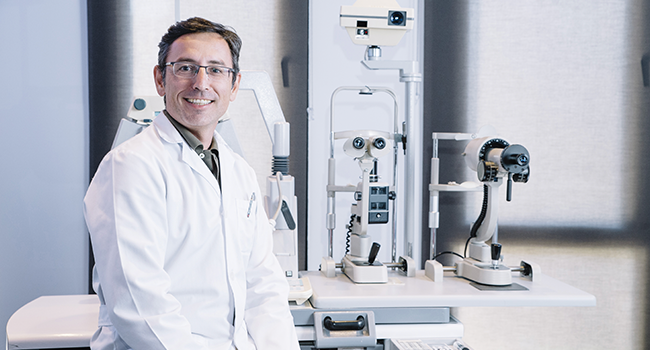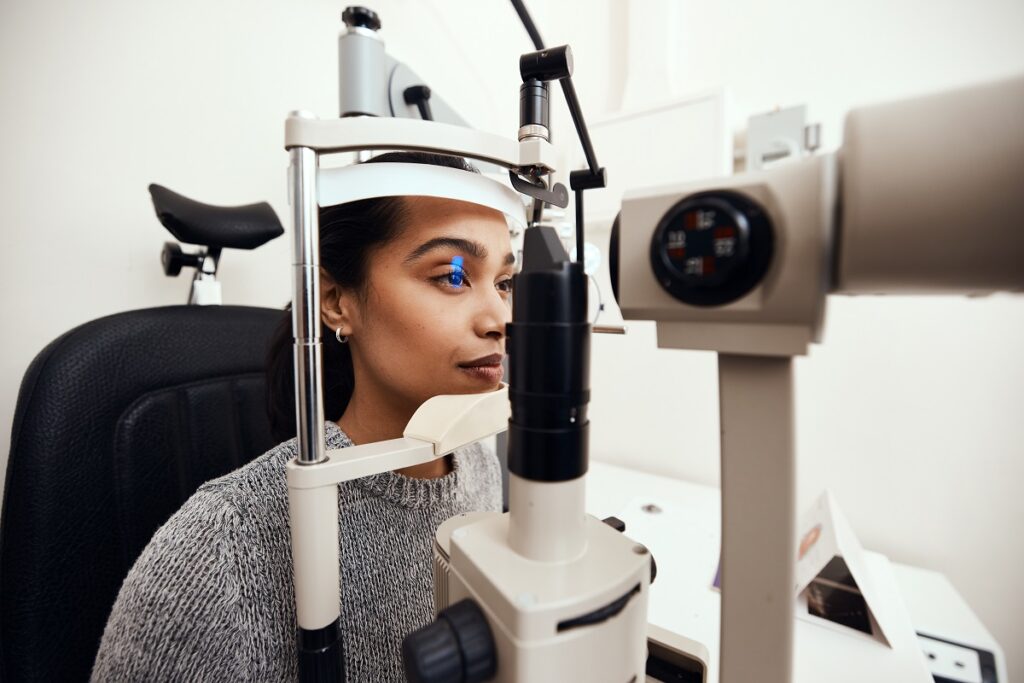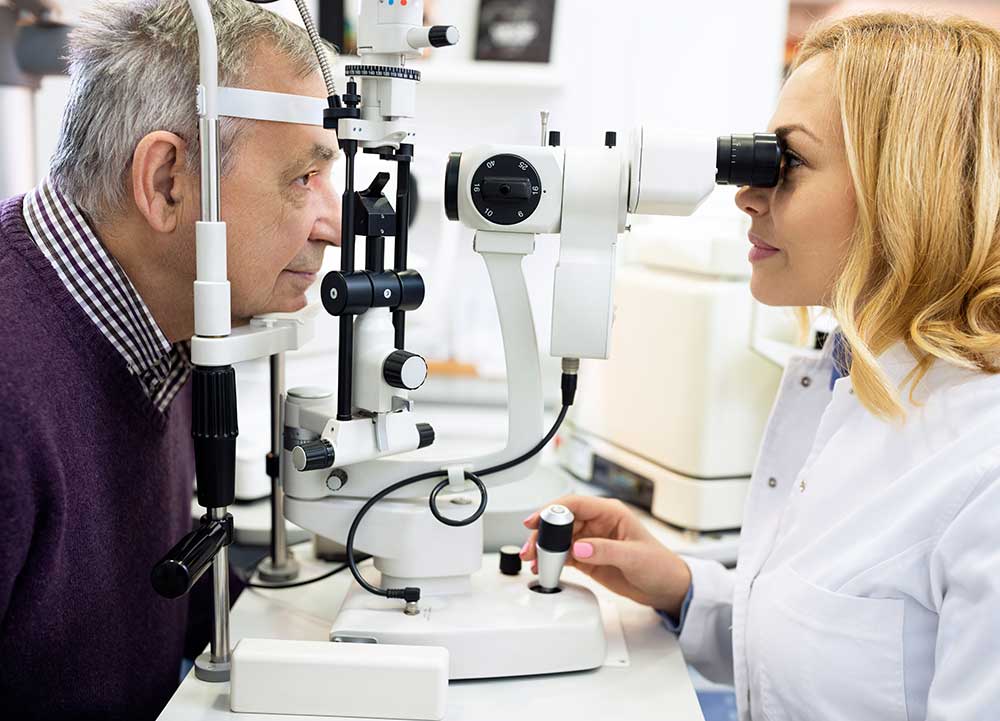Discovering the current Technical Improvements in Optometry and What They Mean for Optometrists
In the ever-evolving field of optometry, recent technical innovations are improving how practitioners come close to eye care. From the accuracy of Optical Coherence Tomography to the nuanced understandings provided by AI-driven analysis tools, these innovations are setting brand-new criteria in person analysis and treatment. Teleoptometry is positioned to redefine accessibility, making certain that expertise transcends geographical constraints. As these developments penetrate the practice, eye doctors are confronted with the difficulty of welcoming these tools to boost client end results. Yet, the concern remains: exactly how will these technological changes redefine the duties and obligations within the profession?
Innovations in Diagnostic Tools
Advancing the area of optometry, technologies in analysis devices have actually transformed the method eye care professionals evaluate and identify eye problems and visual disabilities. The past decade has experienced considerable technical improvements, making it possible for even more thorough and exact analyses. Optical Comprehensibility Tomography (OCT), for instance, supplies high-resolution cross-sectional pictures of the retina, enabling the very early discovery of illness such as glaucoma and age-related macular deterioration. This non-invasive imaging strategy has actually become crucial in contemporary optometric practice.
An additional secret technology is the introduction of innovative corneal topography systems, which map the surface curvature of the cornea with accuracy. These devices are especially beneficial for suitable contact lenses and identifying corneal disorders. Moreover, digital retinal imaging has changed typical ophthalmoscopy, providing thorough, panoramic views of the retina that assist in thorough visual assessments.
The advancement of wavefront aberrometry has actually also been important, enabling the evaluation of refractive mistakes with unmatched accuracy (Opticore Optometry). This modern technology aids in customizing corrective lenses and improving surgical results for refractive surgical treatments. Jointly, these analysis improvements encourage optometrists to deliver superior client care, guaranteeing early intervention and customized therapy approaches, inevitably boosting aesthetic health and wellness results
AI in Individual Administration
Building on the foundation of cutting-edge analysis devices, the consolidation of synthetic intelligence (AI) in client administration represents a transformative leap for optometry. AI systems are significantly utilized to improve efficiency, precision, and customization in individual care. By analyzing substantial quantities of information, AI can recognize patterns and forecast possible ocular problems, making it possible for optometrists to tailor treatments better. This capacity is important in managing chronic eye diseases such as glaucoma and diabetic retinopathy, where very early discovery and continual tracking are essential.
Additionally, AI-driven systems promote structured client interactions and administrative processes. Automated organizing, virtual examinations, and individualized follow-up plans not just improve client complete satisfaction but likewise optimize time management for specialists. These systems can triage clients based upon the necessity of their conditions, ensuring that those in crucial demand get prompt focus.
Additionally, AI enhances decision-making by supplying eye doctors with evidence-based suggestions and treatment pathways. By incorporating data from electronic health and wellness documents, AI tools supply insights that notify clinical decisions, reducing the risk of mistakes and improving individual results. As AI proceeds to progress, its duty in patient management will likely increase, improving the landscape of optometric treatment.
Developments in Retinal Imaging
In the world of optometry, retinal imaging has actually witnessed remarkable technological developments that are boosting diagnostic capabilities and person treatment. Advancements such as Optical Coherence Tomography (OCT) and fundus photography have changed how eye doctors analyze the retina and envision.
Boosted imaging methods like OCT angiography other are further refining analysis accuracy. This non-invasive technique maps blood circulation in the retina, offering critical understandings right into vascular health without the requirement for dye injections. In addition, flexible optics innovation is being incorporated right into retinal imaging systems to fix eye aberrations, delivering extraordinary photo clarity. Such advancements promote the identification of minute retinal modifications that can represent disease development.
Furthermore, developments in fabricated intelligence are augmenting retinal imaging by enabling automated evaluation of big datasets. These systems assist optometrists in determining patterns indicative of pathology, consequently enhancing analysis precision and performance. Collectively, these technologies are transforming retinal imaging into a cornerstone of modern eye treatment, improving results and expanding healing opportunities.
Teleoptometry's Growing Role
Teleoptometry is increasingly becoming a vital component of eye care, driven by advancements in digital communication and diagnostic tools. This is specifically beneficial in underserved and country areas where accessibility to specialized eye treatment is commonly restricted.
The combination of synthetic knowledge (AI) more enhances teleoptometry, enabling the evaluation of visual data and assisting in the detection of ocular problems such as glaucoma and diabetic person retinopathy. basics AI-powered algorithms can swiftly analyze complex imaging information, providing optometrists with important insights that bolster scientific decision-making.
Moreover, teleoptometry supports continuity of treatment through seamless integration with digital health and wellness records (EHRs), enabling eye doctors to preserve comprehensive person histories. When consulting with various professionals., this makes sure that individuals get regular and customized care also.
In spite of these advantages, obstacles continue to be, including making sure information safety and taking care of individual expectations. Nonetheless, teleoptometry stands for a substantial stride towards even more available, efficient, and patient-centered eye care. As innovation progresses, its duty is positioned to increase better.

Future Patterns in Eye Care
A myriad of ingenious trends is readied to reshape the future of eye treatment, driven by technological innovations and the evolving requirements of individuals. One considerable pattern is the integration of expert system (AI) in diagnostics, which assures to boost the accuracy and efficiency of eye examinations. AI algorithms can evaluate large amounts of information from retinal pictures, potentially spotting conditions like diabetic person retinopathy and glaucoma earlier than standard techniques.
Moreover, personalized medication is getting traction in optometry, with hereditary testing educating personalized treatment strategies. This method intends to maximize client end results by customizing interventions to specific genetic accounts. Wearable innovation, such as smart call lenses, is likewise imminent, using real-time monitoring of intraocular stress or sugar levels, therefore offering continual understandings into systemic and ocular wellness.
The fostering of enhanced fact (AR) and online reality (VIRTUAL REALITY) in training and patient education and learning is another arising trend. These innovations offer immersive experiences that can improve understanding and abilities both for optometrists and people. As these patterns evolve, optometrists have to stay abreast of technical advancements to offer sophisticated care, making sure better patient results and satisfaction in the dynamic landscape of eye treatment.
Verdict

Collectively, these diagnostic innovations encourage optometrists to deliver premium individual care, making certain very early intervention and customized treatment approaches, eventually improving aesthetic health and wellness outcomes.

As these innovations proceed to evolve, eye doctors have to adapt and incorporate them into method, inevitably optimizing process performance and boosting the requirement of eye care provided to clients.